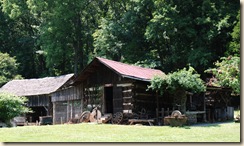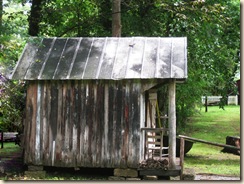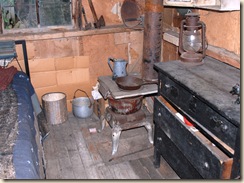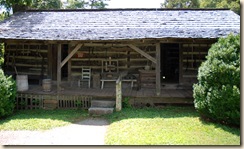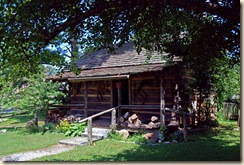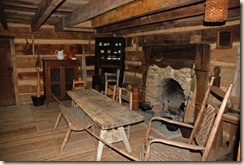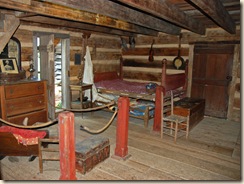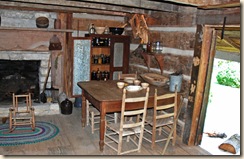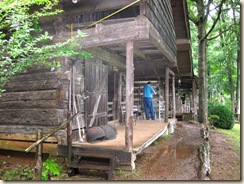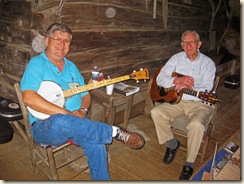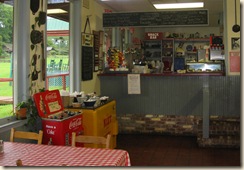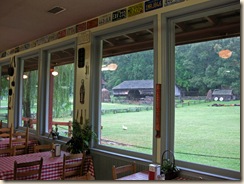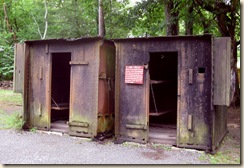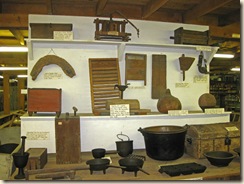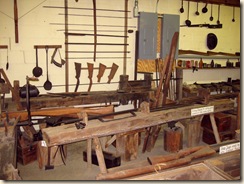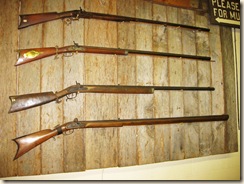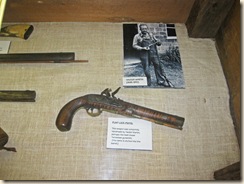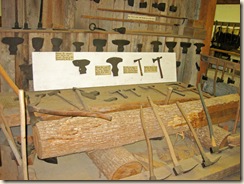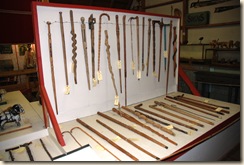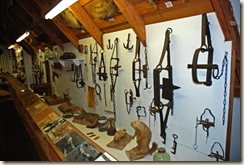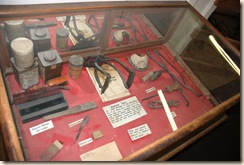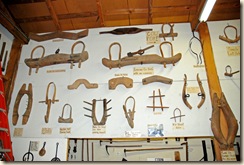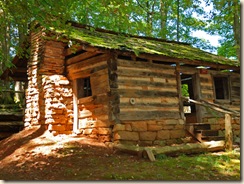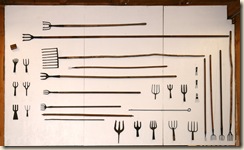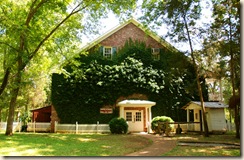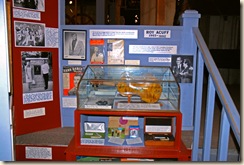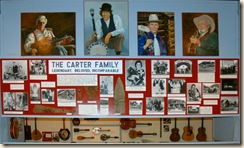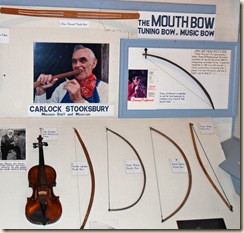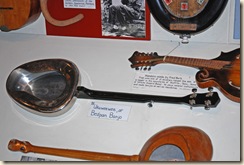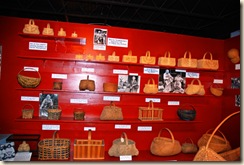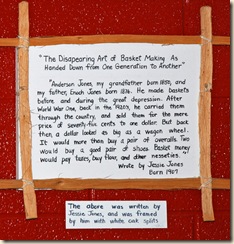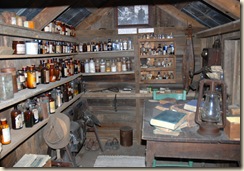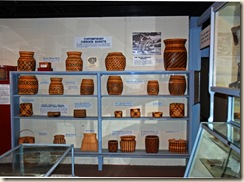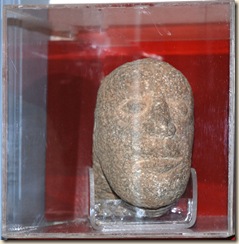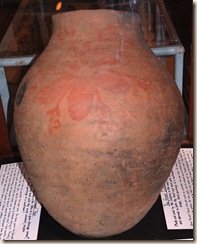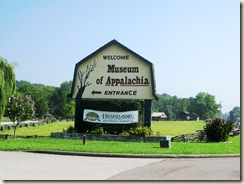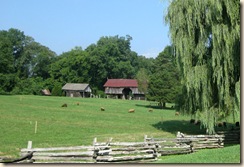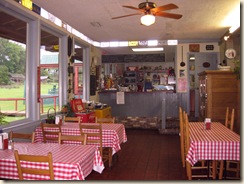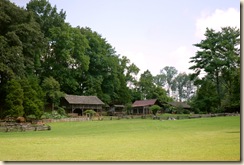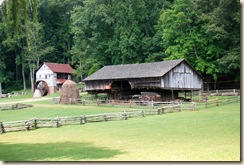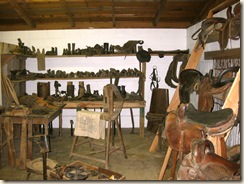A number of readers have written to ask how it’s possible to create and publish blog entries while on the road. Well, the Mobile Studio is equipped with all of the necessary computer equipment. The only thing missing is a reliable, robust, connection to the internet. Therefore, searching for WiFi “clouds” has become a critical aspect of Mobile Studio Travel.
WiFi searching can be a frustrating, even irritating, procedure. As all of you know who travel with computers. But there are times when the WiFi cloud search turns up interesting places that otherwise might be overlooked.
(Click on photos for larger images.)
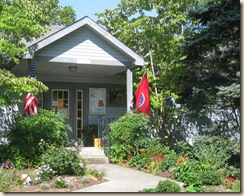 This visit to Eastern Tennessee offered just such an occasion. Discovery of the Betty Anne Jolly Norris Community Library. Now, longtime readers of this blog may recall that I’m just a little library-crazed. Maybe even border-line clinical. Some folks find it hard to pass a bar or night club without stopping in for a quick one. I find it hard to pass a library without stopping in for a quick shelf browse, or just to sample the feel of the place. Last month we visited the Richland County Public Library, right here in Columbia, South Carolina, for example. A wonderful place.
This visit to Eastern Tennessee offered just such an occasion. Discovery of the Betty Anne Jolly Norris Community Library. Now, longtime readers of this blog may recall that I’m just a little library-crazed. Maybe even border-line clinical. Some folks find it hard to pass a bar or night club without stopping in for a quick one. I find it hard to pass a library without stopping in for a quick shelf browse, or just to sample the feel of the place. Last month we visited the Richland County Public Library, right here in Columbia, South Carolina, for example. A wonderful place.
Now, the library in Norris, Tennessee, has neither facilities nor budget to compare with 1431 Assembly in Columbia. But it certainly compares favorably when it comes to the quality of staff and patron service. And, in the innovative application of limited resources. Both of my visits to the Norris Library turned into highlights of the Tennessee trip. And without the ever-pressing need to search out a reliable, robust WiFi cloud, I’d never have found it!
I learned of the Norris Library during a late breakfast conversation at the Museum of Appalachia Snack Bar. Town of Norris Public Safety Director Danny Humphrey just happened to be at the next table. (That’s what we used to call a chief of police, OverHome.) He heard me ask Museum founder, John Rice Irwin, where I might find a WiFi connection.
Mr. Irwin had no idea. So, Mr. Humphrey suggested the Norris Library. He provided the Library’s address and hours of operation. It was obvious from his description that he was proud of the facility.
So, the following afternoon, Tuesday, I stopped by. Well! What a place. Now, you couldn’t tell with just a quick glance at the front door. The Library is housed in a few rooms of the McNeely Municipal Building. A former doctor’s office!
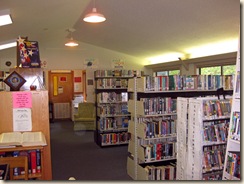 But once inside, the contribution this facility makes to its surrounding community becomes obvious. Even elderly, suspicious-looking old parties like me are greeted with a cheery, “Now, how can we help you?” at the main desk, offered a clear explanation of internet access protocol, and a comfortable arm chair in which to sit.
But once inside, the contribution this facility makes to its surrounding community becomes obvious. Even elderly, suspicious-looking old parties like me are greeted with a cheery, “Now, how can we help you?” at the main desk, offered a clear explanation of internet access protocol, and a comfortable arm chair in which to sit.
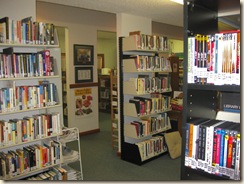 Space is very limited. But somehow the staff has managed to arrange the library’s 20-some thousand items in a way that avoids a sense of over-crowding. Emphasis throughout appears to be on the younger reader, as you can see in the photos above. Including an active Summer Reading Program. But the shelves also brim with high-quality adult materials, both fiction and non-fiction. Evidence of a modest acquisition budget carefully spent!
Space is very limited. But somehow the staff has managed to arrange the library’s 20-some thousand items in a way that avoids a sense of over-crowding. Emphasis throughout appears to be on the younger reader, as you can see in the photos above. Including an active Summer Reading Program. But the shelves also brim with high-quality adult materials, both fiction and non-fiction. Evidence of a modest acquisition budget carefully spent!
I talked with Library director, Patrisha Austin-Halsey, for some time about the facility. And with other members of the staff. The main theme of those conversations was the importance of “community involvement.” Not just “community service,” now. Everybody in the non-profit business does that. Or claims to. But community involvement in the Library’s many programs.
That community involvement was clear in the tone of the staff’s interaction with visiting Library patrons. I sat near the main desk eavesdropping shamelessly for a half-hour or so, as people came and went. It was a delight to hear.
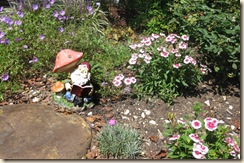 The attractively arranged flower bed at the entrance is one good example of community involvement. Now, flowers like that don’t just bloom spontaneously. They require a lot of work to plant, and even more to maintain. According to one staff member, this Library’s flower garden is the fruit of a Saturday community event. You can see the results of their efforts above.
The attractively arranged flower bed at the entrance is one good example of community involvement. Now, flowers like that don’t just bloom spontaneously. They require a lot of work to plant, and even more to maintain. According to one staff member, this Library’s flower garden is the fruit of a Saturday community event. You can see the results of their efforts above.
 And, in case you didn’t see him, note the bibliophile gnome in the corner!
And, in case you didn’t see him, note the bibliophile gnome in the corner!
 One final thing I just have to mention. The “Dog Days” program. Click on the photo above to read the text. What an innovative way to get children to read! Especially children who may be withdrawn or self-conscious. “Since Jenny can’t read, please come by the Library and help us read stories to her. She loves hearing new stories to share with her other dog friends!” Another of what I used to call “High Bang; Low Buck” programs. One that other libraries might consider for adoption.
One final thing I just have to mention. The “Dog Days” program. Click on the photo above to read the text. What an innovative way to get children to read! Especially children who may be withdrawn or self-conscious. “Since Jenny can’t read, please come by the Library and help us read stories to her. She loves hearing new stories to share with her other dog friends!” Another of what I used to call “High Bang; Low Buck” programs. One that other libraries might consider for adoption.
So, heartfelt thanks to the Staff of the Norris Community Library for your kindness and hospitality. I hope to be back to see you one of these days.
